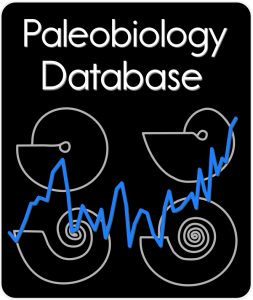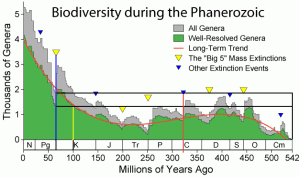Conserving our world’s biodiversity is currently one of the biggest challenges we face. I wrote a post recently about some of the issues palaeontologists face when trying to make our science relative to current conservation management and biodiversity issues (and have written elsewhere about this too). This is very much a developing issue within which palaeontology is framing itself, as with ever squeezing science budgets around the world, scientists are being forced to find the hook or application that makes their research ‘relevant’ to broader society. The role that palaeontology can play for both climate change and biodiversity patterns and processes is the natural progression of science accompanying such shifts.
A new feathered dinosaur – worth getting ruffled for?
Two new feathered dinosaur articles appeared in the latest edition of Nature Communications; one on gender identification in a well-known theropod (the meat noshing ones), and the subject of a forthcoming blog post, and another on a new feathered fiend from, surprise surprise, China.
I normally really don’t like writing about theropods, especially of the feathered variety, as it just seems like I’m jumping on the bandwagon that they were awesome and every aspect of them needs extensive media coverage. Ok, yeah, they can be pretty cool. But only, for me, in the context of the larger evolutionary patterns that they can reveal to us, such as the evolution of feathers and flight. Each new fossil doesn’t exactly transform our knowledge of this, but they do help us to refine our theories to a certain extent; whether or not that’s worthy of excessive media coverage and Nature publications, is not my judgement to make (no, it’s not).
DINOSAUR! But what does it mean..?
Palaeontology probably isn’t the most difficult of sciences, but it does incorporate aspects of chemistry, biology, and physics to a certain degree, as with many other geoscientific disciplines. Palaeontologists are also well known for the mysterious and unintelligible ‘science-speak’ that they use in research papers, fueled by this combination of a multitude of various sciences, the insane taxonomic system that we employ to identify fossils, and the standard anatomical descriptive phrasing too. I guess the aim of this series of posts, is just to break down some of the more complex terminology that you may come across online or in papers, and gain a bit more of an understanding of Palaeontology and related fields in the process. Yeah, it’s pretty much a glossary. With dinosaurs. Suggestions for words welcomed!
The Palaeobiology Database – a quick intro
A substantial portion of my PhD involves contributing to the Pal[a]eobiology database, the largest current online database of global fossil occurrences, literature references, and taxonomic data. It’s a public resource, so anyone can access the information contained within the database (yay for open data!). The project is very much on-going, but currently over a million taxonomic occurrences have been input, from a range of international contributors (usually post-docs, research fellows and their minions, aka PhD students). Ultimately, the aim is to provide global, collection-based occurrence and taxonomic data for all groups of any geological age. Along with this, there is a selection of web-based software that anyone can use for the simple statistical analysis of whichever portion of the data they chose to access. According to the website, the long-term goal is also to encourage collaboration across the globe so that palaeontologists can help answer some of the large-scale questions that exist in terms of the evolutionary history of life on Earth. That’s a pretty decent thing to aim for.
Unfortunately, but also thankfully, only ‘professional researchers’ can actually input data. This is to impose a degree of rigour, as if any old Tom Dick or Harry could enter or modify data, there would be serious data validity issues. You can see what the various groups of researchers are working on here, and it’s pretty varied! Anything from calculating clade occurrence times and comparing/combining this with molecular data, to diversity trends of plants through the last few hundred million years.
Where I think the real strength of the database lies, is that it can be analysed in congruence with other datasets, such as various climatic variables, land area, and latitude, to see how individual lineages and groups have co-evolved with the planet and Earth systems through time, and use this as a predictor of future trends in biodiversity; something that is especially important given that we may be heading into a time of exceptional pressure on biological systems.
What I’m gonna be doing with the database in particular, is filling out the entire Upper Jurassic tetrapod occurrence bit, and combining this with the Early Cretaceous dataset, which is nearing completion thanks to a mammoth effort from many people, including my supervisor Phil Mannion, to look at extinction dynamics and selectivity patterns in terrestrial tetrapods throughout this period. More on this, when I actually have the data! Many exceptional publications have already come out of this project, the latest just a couple of days ago looking at the Cretaceous tetrapod record, which I’ll be writing about shortly on here.


